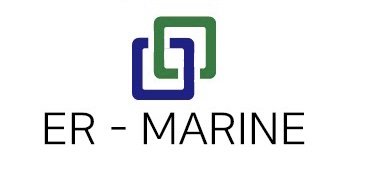
Port infrastructure in South Korea
As South Korea ambitiously targets a 14.3 GW capacity for offshore wind by 2030, the spotlight intensifies on Korea’s port infrastructure. While the “Port Act” provides a structured framework for port development and operations, there is a gap between existing infrastructure capabilities and the demands of offshore wind projects. This is where our expertise becomes invaluable. Since 2020, we have been surveying the port infrastructure, offering detailed insights into its capabilities and limitations, thereby guiding clients through the complexities of offshore wind development.
Understanding the Port Infrastructure Landscape
Despite the Port Act's strategic emphasis on trade and coastal ports, as well as the envisioned enhancements through the Port Hinterland Complex and Port Master Plan, substantial development that aligns with offshore wind needs is still in its early stages. ER-MARINE's have documented critical gaps in project infrastructure, including staging facilities, heavy-lifting capabilities, and support for manufacturing and O&M activities necessary for the efficient rollout of offshore wind projects.
Trade and Coastal Ports: While these ports are critical to the national economy and offshore wind operations, our analysis indicates that improvements are necessary to fully support the specialised needs of offshore wind projects, from staging to deployment.
Port Facilities and Hinterland Complex: Our study shows that targeted investments are needed in port facilities to meet the specific needs of offshore wind. These investments should include creating Type 1 and Type 2 port hinterland complexes, which can help the offshore wind supply chain and spark industrial revitalization and development.
Bridging the Gap with Local Expertise
ER-MARINE, with boots on the ground, leveraging its detailed knowledge of South Korea's port infrastructure, plays a key role in bridging the gap between current capabilities and the requirements of the offshore wind sector. Our surveys help identify bottlenecks and opportunities for infrastructure development, guiding clients through the complexities of port selection, utilisation, and optimisation for offshore wind projects. As a local expert, ER-MARINE not only provides insights into infrastructure capabilities but also advises on strategic improvements to meet the evolving demands of the offshore wind industry.
Advisory Services: Offering expert advice to clients on navigating the port infrastructure landscape, focusing on strategic port development and optimisation for offshore wind projects.
Strategic Assessments: Conducting detailed surveys of port facilities, including staging, manufacturing, and O&M capabilities, to support informed decision-making for offshore wind development.
A few key facts about port infrastructure in South Korea:
In South Korea, we have two kinds of ports, identified in the “Port Act.” These are “trade ports” and “coastal ports."
“Trade port” means a port that is closely related to the national economy and the public interest, as a port where outward-going vessels enter and depart.
For systematic and efficient management and operation, trade ports are subdivided in consideration of import and export volumes, development plans, and regionally balanced development.
Central government - managed trade port:
A port that has a significant relationship with the interests of the country, such as handling cargo in the hinterland of the metropolitan area as a base for domestic and overseas land and sea transportation networks or supporting key industries.
Local government - managed trade port:
A port whose main purpose is to handle cargo necessary for local industries as a base for the land and sea transportation networks of each region.
"Coastal port" means a port where vessels operating mainly between domestic ports enter and depart.
Coastal ports may be subdivided into the following ports in consideration of local conditions and characteristics and port functions for systematic and efficient management and operation.
Central government -managed coastal ports:
Ports that are important for national security or territorial sea management, or whose main purpose is to evacuate ships in case of emergencies such as bad weather.
Local government -managed coastal ports:
Ports whose main purpose is to handle cargo necessary for local industries, promote benefits such as passenger transportation, and support tourism revitalization.
Port hinterland complex means an area designated in order to promote the added value of the port and the revitalization of port-related industries and to seek the benefit of the persons using the port by collectively installing supporting facilities and port-friendly facilities in the port area and to enhance the functionality of these facilities.
The Port hinterland complex is divided into two types:
Type 1 port hinterland complex:
A port hinterland complex to promote the added value of the port and the revitalization of port-related industries by collectively installing and fostering support facilities and harbor-friendly facilities in the port area of the trade port.
Type 2 port hinterland complex:
A port hinterland complex to enhance the functions of the port and the type 1 port hinterland complex and to benefit the people who use the port by installing facilities such as general business facilities, sales facilities, and residential facilities in the port area.
Port Master Plan:
MOF shall establish a port master plan on a 10- year basis in order to promote the development of ports and to operate ports efficiently.
MOF shall review the validity of the Port Master Plan every 5 years and may change the Port Master Plan if necessary.


